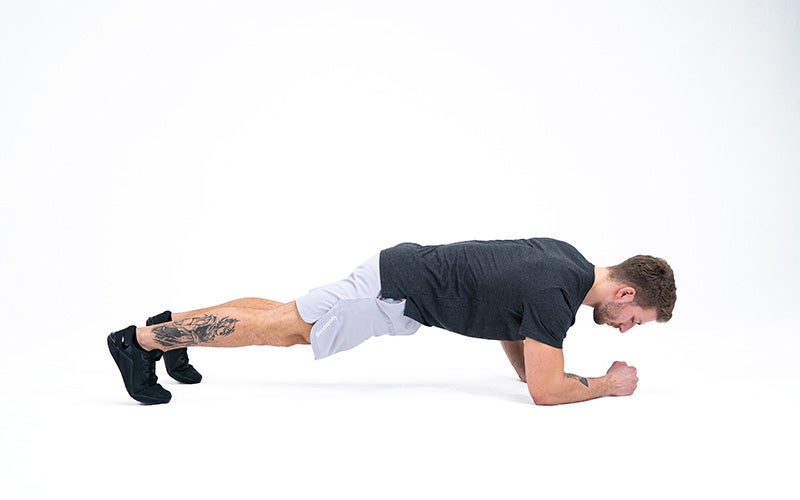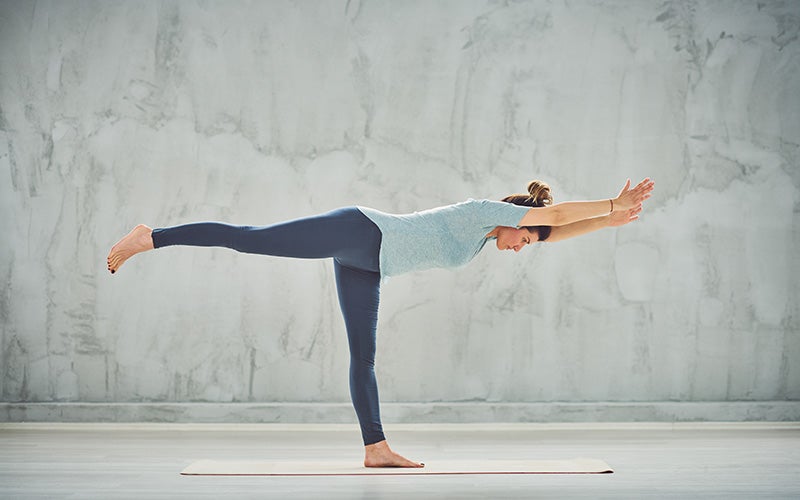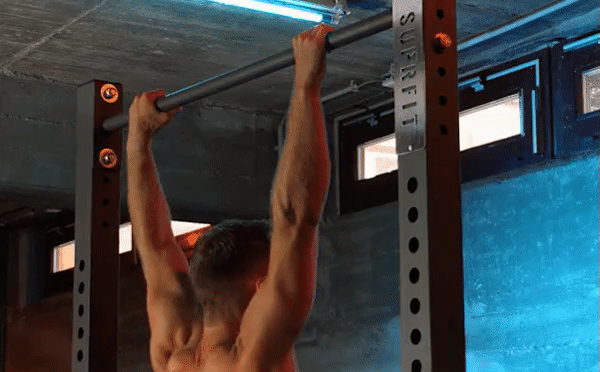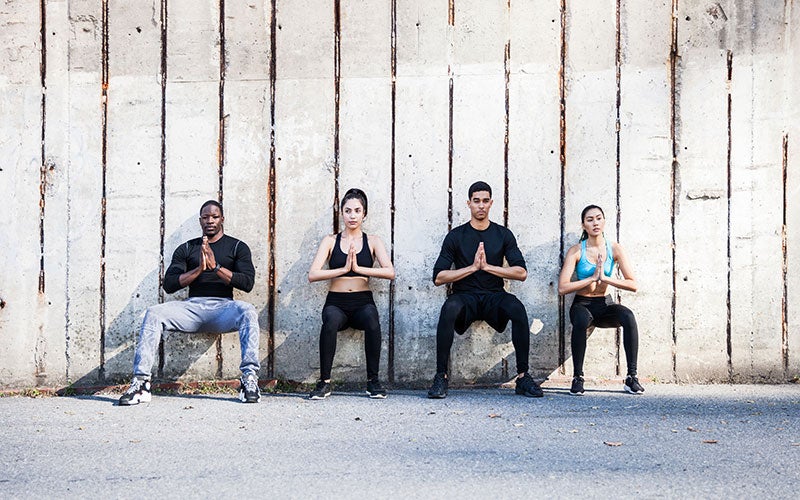Why the Mind-Muscle Connection is Your Key to Maximizing Muscle Growth
 ©Smederevac
©Smederevac
Did you know that you can actually communicate with your muscles? This is known as the mind-muscle connection, and it’s essential to successful muscle growth. You may not have known you needed to know more, but we promise, it’s really cool. And you’ll learn how to improve yours and make the most of it.
What Is the Mind-Muscle Connection?
Also known as the neuromuscular connection, this phenomenon allows our minds and muscles to communicate. Any muscle you engage must first be informed to do so by the brain. It fires signals to the central nervous system that inform it to activate the corresponding muscle. This is also known as a muscle contraction.
The quality of your mind-muscle connection is what determines how hard your muscles can work. If you want to reach your full potential and maximize your gains, mental training is just as necessary as physical training.
More concretely, the mind-muscle connection is about introducing mindfulness into your exercises. One easy way to bring this practice into your routine is to focus on a specific muscle during your workout. Studies1 show that a strong mind-muscle connection can lead to better performance. Keep reading to find out how you can strengthen the link between your mind and muscles!
Benefits and Effects
If your top goal is muscle building, you’ll want to prioritize establishing a solid mind-muscle connection. And here’s why.
#1 Make Progress Faster
With a strong mind-muscle connection, you can consciously target the muscles you’re training and activate them specifically. Doing this will allow you to push the muscle to its fullest potential and activate more muscle fibers.
If you’re new to strength training, you might find it difficult because you aren’t used to engaging your muscles like that. For example, you might think you need to engage your biceps the most when you’re doing pull-ups. But it’s actually the muscle group in your back that does most of the work!
If you’re not pointing your thoughts and efforts at the muscles that need them most, your pull-up may feel harder than it needs to. Multiply that around your whole body, and you can see how your muscle growth might stagnate.
#2 Reduce Your Risk of Injury
The better the connection between your mind and your muscles, the more reliably your muscles will function both individually and together.
Take squats, for example. A weak mind-muscle connection can make you unstable at the bottom end of your squat and rotate your knees inward. Not only are you risking injury, but you’re also wasting precious energy trying to keep yourself stable.
#3 Improve Your Posture and Correct Muscle Imbalances
In addition to helping you get the most out of your muscles, the mind-muscle connection also contributes to how you feel and move in your body. Being conscious of your mind-muscle connection will make you quicker at recognizing when you’re not using proper form. You might be arching your back, or working one side of your body harder than the other. Paying attention to your muscles as you use them can even stave off health issues like back problems!
#4 Work Your Full Body
What else makes the mind-muscle connection important? You can activate as little as one muscle or as much as an entire muscle chain. This allows you to transfer the power behind a motion more easily from your core muscles to your auxiliary muscles. And that can lead to better performance.
#5 Increase Fun and Focus
To make a mind-muscle connection, you need to be highly aware of your body. That means you need to stay focused during your workouts. Though it might be tempting to let your mind drift, you’ll make so much more progress if you keep your mind on your muscles. Plus, being mindful has been shown to increase people’s enjoyment of exercise. There’s no harm in trying!
Our tip: Read everything you need to know about strength training for beginners here. There’s even info on how your diet can help you reach your fitness goals!

How Do You Strengthen the Mind-Muscle Connection?
Before we show you specific exercises to improve your mind-muscle connection, we’re going to talk about how the different methods work.
- Full concentration: If you aren’t focusing, there simply is no connection between mind and muscle. Set a goal to be fully present during a workout.
- Continuity: Just like everything else, the mind-muscle connection will only develop with practice. You’ll need to remind yourself again and again to consciously feel and activate your muscles, but consistency will help you develop muscle memory over time.
- Warm-up: Before any strength training exercise, always warm up the muscles you plan to target. Get that connection established early on. That’ll make it easier for you to get the most out of your warm-up, then push every muscle to its limit during your workout. Here are some great warm-up exercises!
- Peak contraction: The moment you hit the peak of an exercise, contract your muscle fibers and hold the position for a few seconds longer. It will help you feel your target muscles very clearly.
- Static exercises: Static exercises require muscle contractions and internal focus. You’ll hold the position for as long as possible. These moves are a good way to train the mind-muscle connection while also strengthening muscle fibers.
- Balance exercises: Balance exercises require constant focus on muscle movement and body awareness. They train the different muscle groups to interact with each other. And, you guessed it, that’s a bonus for your mind-muscle connection.
- Isolation exercises: Isolation exercises like bicep and leg curls target and focus entirely on specific muscles rather than the full body or several muscle groups.
- Posing: Striking a pose at the mirror may sound like useless vanity, but it’s not. What it is, is a great way to develop your mind-muscle connection! Seeing which muscles you’re contracting helps better cement the signals sent by your brain.
- Know the anatomical function: If you know the function of the target muscle or the movement it’s responsible for, it will be easier to focus on that muscle during the exercise and consciously feel it at work.
Exercises
And now, on to a few moves that are showstoppers for your mind-muscle connection!
#1 Plank
Planks are one of the most effective mind-muscle connection exercises. Begin with your stomach resting on the ground and your elbows under your shoulders. Rest your forearms on the floor and push yourself into a high push-up position. Your neck should be in line with your spine, your shoulders, torso, and glutes should form a line, and your eyes should be pointed between your hands.
Note: squeeze your glutes, pull your stomach in, straighten your knees and push your heels away from you for extra support.
You can also do a plank on your forearms. Make sure your elbows are directly below your shoulders.

Tipp: Hier sind noch mehr Plank Varianten und unsere kostenlose 30-Tage-Plank-Challenge!
Our tip: Our free 30-day plank challenge is packed with even more fun plank variations.
#2 One-Legged Balance
Balancing on one leg is a great exercise to work your mind-muscle connection and increase body awareness. Begin in a standing position with ab muscles engaged. Tilt your torso forward and lift one leg at a time. Make sure to keep your legs extended, not bent. Don’t stop tilting until your upper body and leg are parallel to the floor. You can keep your arms at waist level or extend them out to the side or the front. Hold the position, then return to the starting position before repeating on the other side.

#3 Bicep Curls
Along with the bench press, bicep curls are great for strengthening the connection between the brain and the biceps. Grab two dumbbells and hold them in your hands, palms facing forward. Sit on an exercise bench or stand with your legs hip-width apart. Pull your shoulders back and your shoulder blades down. Keep your elbows firmly planted at your waist. Start by stretching your arms and briefly activating your triceps. Then, bend both of your arms at once and lift the weight up to your shoulders. Hold this position briefly, then lower the dumbbells in a controlled manner until your arms are fully extended.

#4 Pull-Ups
Pull-ups are a beast of an exercise! And they’re great for taking the mind-muscle connection to the next level. With your hands shoulder-width apart, grab the pull-up bar with your palms facing forward. Let your body hang. Your arms should be straight, your muscles relaxed, and you should be looking straight ahead. To transition from a passive to an active position, pull your shoulder blades down behind you. Your upper body should already be moving slightly upward. Contract your abs and glutes. Pull yourself up with your biceps and upper back muscles until the bar is at the same level as your sternum. Hold that target position, then lower yourself down in a controlled manner. Keep your body straight and engaged. Once you’re down, switch back to passive suspension and repeat from there.

Learn to do a pull up with these 5 exercises!
#5 Wall Sit
The wall sit is the perfect warm-up exercise to prepare your butt and leg muscles for everything from squats to lunges. Start by standing with your back against a wall, then slide your butt down until you are in a sitting position. Your legs should be at a 90-degree angle. Let your arms hang at your sides and press your palms against the wall. Hold a weight in front of your chest for more intensity.
Above all, make sure to keep your back straight during this exercise. Tighten your abs by pulling your stomach in. Press your feet firmly into the floor and hold the position.

Our tip: Discover our 5 favorite squat variations!
Our Conclusion
- The mind-muscle connection is an invisible link between the body and the brain, and it can allow you to reach your fullest potential.
- The stronger the mind-muscle connection, the more quickly your strength training will progress.
- Beginners may struggle with building the mind-muscle connection, but it will improve with practice and consistency.
- The best training methods for a strong mind-muscle connection are focus, static, balance, and isolation exercises, as well as pausing at the climax of the exercise and posing in front of the mirror to see what happens when you flex your muscles.
More Tips for a Healthy Life from foodspring
- 9 Ab Exercises to Transform Your Core
- December Winter Workout Calendar
- The Real Reasons You Should Take Up Yoga This Winter
- Grip Strength—Why You Need It and How to Develop It
Sources for this article
We at foodspring use only high-quality sources, including peer-reviewed studies, to support the facts within our articles. Read our editorial policy to learn more about how we fact-check and keep our content accurate, reliable, and trustworthy.
- 1https://pubmed.ncbi.nlm.nih.gov/14998709/↩

































